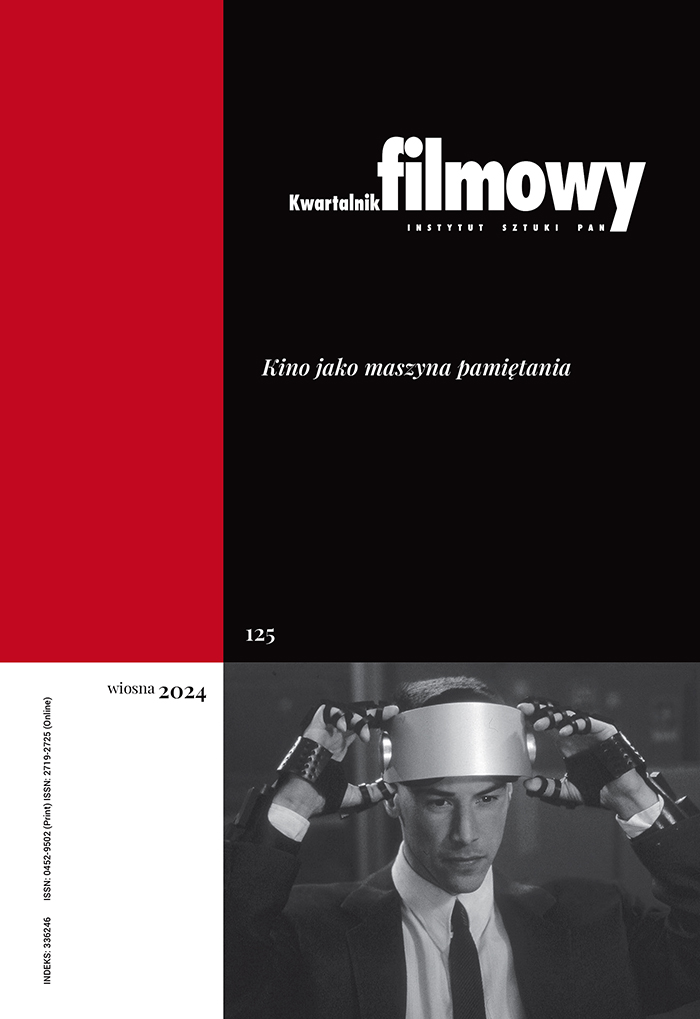Powerful Films and Deep Complexes: Wojtek Smarzowski’s “Rose” and Wojciech J. Has’ “How to Be Loved”
Abstract
The article is a comparative analysis of Wojtek Smarzowski’s Rose (Róża) and Wojciech J. Has’ How to be loved (Jak być kochaną), films that are connected in their theme of sexual violence in the context of the Second World War. Taking into the account the historical context within which the films were made, and the post-war trauma, the author points to the changes that took place over the last fifty years in the language of film and ways of presenting violence (in particular, war rape of women). In addition the author also considers the image of a soldier of the Polish Home Army (Armia Krajowa) in both films, the role and the way the female protagonist is constructed, and her place in the presented world.
Keywords:
Wojciech Smarzowski, Wojciech Jerzy Has, World War II, sexual violenceReferences
Błoński Jan, Biedni Polacy patrzą na getto, "Tygodnik Powszechny" 1987, nr 2.
Google Scholar
Czerwiakowska Ewa, Pamięć kobiet, "Karta" 2008, nr 57, s.62.
Google Scholar
Debiuty polskiego kina, M. Hendrykowski red., Konin 1998, s.58.
Google Scholar
Lubelski Tadeusz, Strategie autorskie w polskim filmie fabularnym lat 1945 - 1961, Kraków 2000, s. 80.
Google Scholar
Madej Alina, Kino. Władza. Publiczność. Kinematografia polska w latach 1944-1949, Bielsko-Biała 2002, s. 172-173 i 180.
Google Scholar
Osiecka Agnieszka, fragment piosenki w wyk. E. Fettinga towarzyszącej czołówce filmu Prawo i pięść (1964), reż. J. Hoffman.
Google Scholar
Ossowska Maria, Ethos rycerski i jego odmiany, Warszawa 2000, s. 76.
Google Scholar
Plűschke Helene, Dziennik śląski. Fragmenty niepublikowanego dziennika, tłum. E. Czerwiakowska, "Karta" 2008, nr 57, s. 74-75.
Google Scholar
Styron William, Wybór Zofii, tłum. Z. Batko, Warszawa 2010, s. 284.
Google Scholar
Authors
Agnieszka Morstinkwartalnik.filmowy@ispan.pl
Jagiellonian University Poland
Specjalizuje się w historii kina polskiego. Swoje badania prowadzi z perspektywy antropologii kultury, a także pod kątem filmowych przedstawień procesów historycznych. Opublikowała Jak daleko stąd do raju? Religia jako pamięć w polskim filmie fabularnym (2010); współredagowała tomy Ciało i seksualność w kinie polskim (2009) oraz Kompleks Konwicki (2010). Obecnie przygotowuje pracę Energia Polonii (o filmach Andrzeja Wajdy), a także książkę poświęconą wizerunkom ziemiaństwa i arystokracji w kinie polskim.
Statistics
Abstract views: 241PDF downloads: 161
License
Copyright (c) 2012 Agnieszka Morstin

This work is licensed under a Creative Commons Attribution 4.0 International License.
The author grants the publisher a royalty-free non-exclusive licence (CC BY 4.0) to use the article in Kwartalnik Filmowy, retains full copyright, and agrees to identify the work as first having been published in Kwartalnik Filmowy should it be published or used again (download licence agreement). The journal is published under the CC BY 4.0 licence. By submitting an article, the author agrees to make it available under this licence.
In issues from 105-106 (2019) to 119 (2022) all articles were published under the CC BY-NC-ND 4.0 licence. During this period the authors granted a royalty-free non-exclusive licence (CC BY-ND 4.0) to use their article in „Kwartalnik Filmowy”, retained full copyright, and agreed to identify the work as first having been published in our journal should it be published or used again.
Most read articles by the same author(s)
- Agnieszka Morstin, The Story of a Certain Illusion: Theories of Kitsch and “The Double Life of Veronique” by Krzysztof Kieślowski , Kwartalnik Filmowy: No. Special Issue (2013): Polish Film Scholars on Polish Cinema
- Agnieszka Morstin, Kieślowski versus Pawlikowski: “The Double Life of Veronique” and “Cold War” as Tales of Bipartite World , Kwartalnik Filmowy: No. 103 (2018): Young Polish Cinema – Confrontation of Generations











